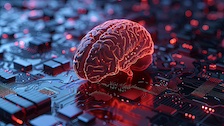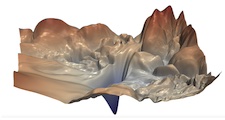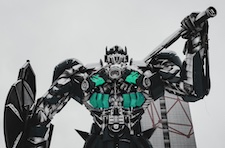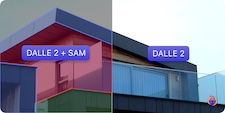| LETTER FROM THE EDITOR |
Dear Colleague,
On Thursday, July 11, 2024 at 9 am PT, the Yole Group will deliver the free webinar “The Rise of Neuromorphic Sensing and Computing: Technology Innovations, Ecosystem Evolutions and Market Trends” in partnership with the Edge AI and Vision Alliance. The neuromorphic sensing and computing markets are projected to experience substantial growth in the coming years, reaching a combined value of $8.4B by 2034. Mobile applications will drive the neuromorphic sensing market, while data center applications will lead in the neuromorphic computing market. The neuromorphic ecosystem is maturing, with key players and startups adopting diverse strategies to capitalize on market opportunities. Neuromorphic technologies, inspired by biological brains, offer power-efficient solutions for AI tasks, addressing the declining economic feasibility of scaling semiconductor devices. These technologies provide benefits such as low latency, high scalability, and online learning, enabling real-time edge-AI applications and addressing privacy concerns. Neuromorphic sensing options include standalone event-based sensors and hybrid sensors combining RGB and event-based pixels. Neuromorphic computing systems, featuring event-driven processing and spiking neural network algorithms, enable online learning and autonomous robotics. This webinar, co-presented by Adrien Sanchez and Florian Domengie, senior technology and market analysts at the Yole Group, will delve into the latest advancements in neuromorphic sensing and computing technologies and their applications across various industries, offering insights into the future of sustainable and efficient AI processing at the edge. A question-and-answer session will follow the presentation. For more information and to register, please see the event page. Brian Dipert |
| DEEP LEARNING MODEL OPTIMIZATION TECHNIQUES |
|
Quantizing Convolutional Neural Networks for Practical Deployment A Guide to Optimizing Transformer-based Models for Faster Inference |
| MODELS AND TOOLSETS FOR ENHANCED DEVELOPMENT |
|
The Foundation Models Reshaping Computer Vision DeepStream 7.0 Release Powers Next-generation Vision AI Development |
| UPCOMING INDUSTRY EVENTS |
|
The Rise of Neuromorphic Sensing and Computing: Technology Innovations, Ecosystem Evolutions and Market Trends – Yole Group Webinar: July 11, 2024, 9:00 am PT Who is Winning the Battle for ADAS and Autonomous Vehicle Processing, and How Large is the Prize? – TechInsights Webinar: July 24, 2024, 9:00 am PT |
| FEATURED NEWS |
|
The SHD Group will Release a Complimentary Edge AI Processor and Ecosystem Report in Q3 2024 in Collaboration with the Edge AI and Vision Alliance eYs3D Microelectronics Unveils the SenseLink Multi-camera System, Providing a Versatile Machine Vision Sensing Solution for Smart Applications Qualcomm’s AI Developer Hub Expands to Support On-device Applications for Snapdragon-powered PCs Ambarella’s Next-generation AI SoCs for Fleet Dash Cams and Vehicle Gateways Enable Vision Language Models and Transformer Networks Without Fan Cooling Lattice Semiconductor Introduces an Advanced 3D Sensor Fusion Reference Design for Autonomous Applications |






